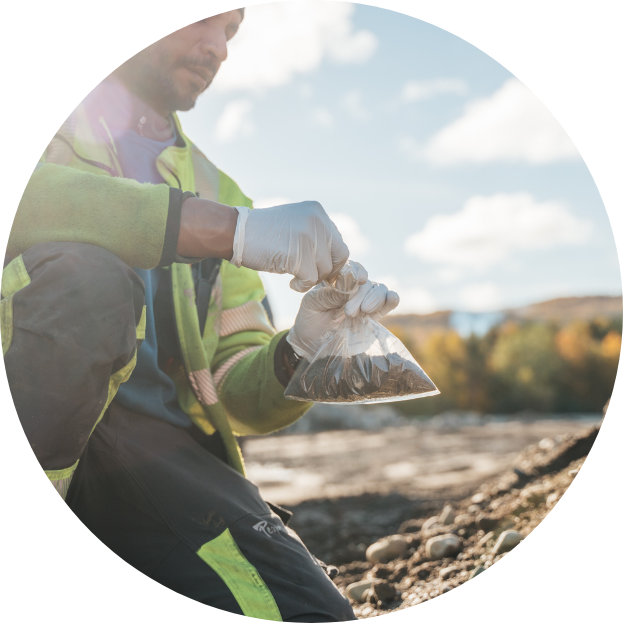Perpetuum
Safe deposit for PFAS-contaminated soil
Per- and polyfluoroalkyl substances (PFAS) are a group of synthetic chemicals that have been in use since the 1940s. To date, there are over 5000 variations of this anthropogenic PFAS on the global market with the bulk of them considered as pollutants.

PFAS – What is it?
The PFAS compounds can be compared to hydrocarbon chains, where the hydrogen is replaced by fluorine. The substances are very harmful to health, but to a varying degree depending on the type of PFAS. The main political and environmental focus is on PFOS and PFOA, which are historically two of the most widespread variants. However, there is increasing attention to other variants and to the sum of larger groups of PFAS substances.
If a product is described as “water proof”, “stain resistant”, or “non-stick” it will most likely contain PFAS compounds. PFAS is used in textiles, food packaging, griddle coating in frying pans / pots, ski wax, sealants, insulation, antifoaming agents and many more products. Historically, one of the largest areas of application has been fire-fighting foams. Therefore, fire-training fields are one of the places with the largest and highest concentration of PFAS.
Currently, the Norwegian authorities only regulate soil contamination for PFAS, although PFAS is also found in many other types of waste. Although PFAS contaminated soil is normally defined as ordinary waste, a special permit is required from the Authorities to be able to receive soil with PFAS, with strict requirements for handling and measures to prevent PFAS from leaking out of the landfill.
Approved for receiving PFAS
Perpetuum Circuli, a company in the Perpetuum Group, is approved for receiving PFAS contaminated soil for safe disposal. The contaminated masses enter a specially designed landfill cell, where PFAS is retained by adsorption on sorbent in the landfill. As an added safety, the landfill has its own sewage treatment plant, where any residual concentrations of PFAS components are captured. There is constant monitoring of the cell to assure that PFAS contaminated water does not escape the area.
For further information and contacts go to the Norwegian PFAS page.
